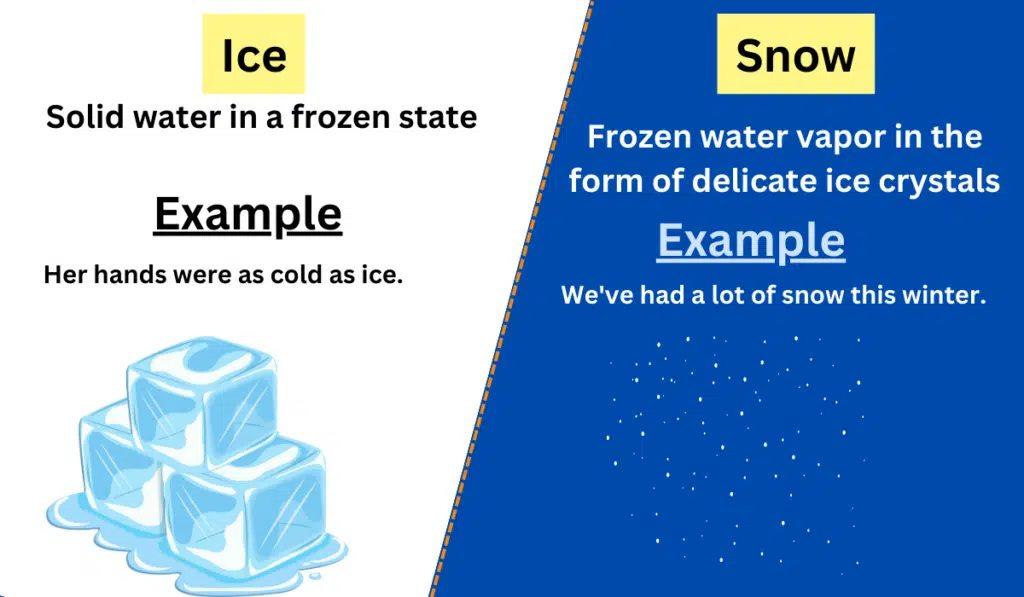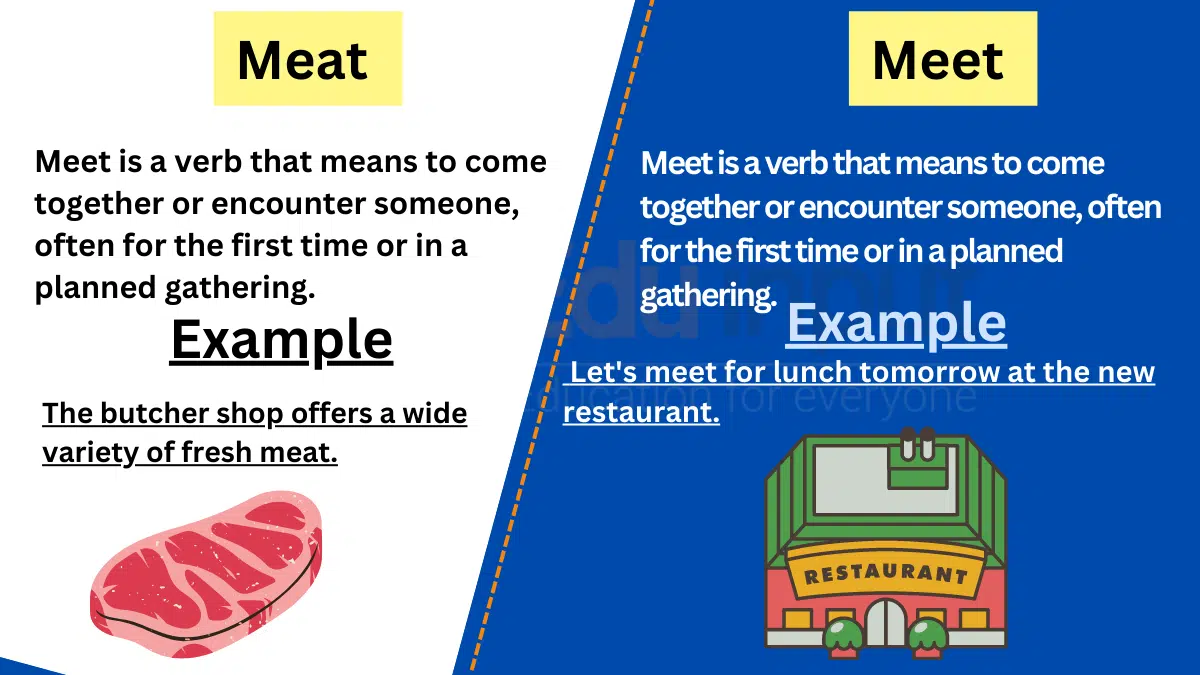Ice vs. Snow-Difference between and examples
In the wintry landscapes and chilly climates, the terms “ice” and “snow” often go hand in hand. However, beyond their shared association with freezing temperatures, these words hold distinct characteristics that set them apart.

In this article, we will explore the nuances between “ice” and “snow,” examining their definitions, properties, and contexts.
By understanding their differences, we can better appreciate the diverse forms of frozen precipitation and accurately convey our experiences in icy environments.
Join us as we embark on a journey to unravel the distinctions between “ice” and “snow.”
Meanings and Examples
Ice Definition
Definition: “Ice” refers to the solid state of water that occurs when the temperature falls below its freezing point. It is transparent or translucent, hard, and brittle.
Examples of Ice
- The lake was frozen, and a thick layer of ice covered its surface.
- She placed the cold beverage on the table, causing condensation to form on the glass as the ice melted.
- The winter storm transformed the tree branches into sparkling ice sculptures.
Snow Definition
Definition: “Snow” refers to frozen water vapor that falls from the atmosphere in the form of delicate ice crystals. It typically appears as soft, white, and fluffy accumulations on the ground.
Examples of Snow
- Children were excited to wake up to a fresh blanket of snow covering the neighborhood.
- The snowfall created a magical scene, as the landscape was transformed into a winter wonderland.
- He enjoyed skiing down the slopes, gliding through the powdery snow.
Difference between Ice and Snow
| Category | Ice | Snow |
| Meaning | Solid water in a frozen state | Frozen water vapor in the form of delicate ice crystals |
| Example | “The lake was frozen, and a thick layer of ice covered its surface.” | “Children were excited to wake up to a fresh blanket of snow covering the neighborhood.” |
| Usage | Referring to frozen water in a solid state | Describing frozen water vapor that falls as ice crystals |
| Context | Winter conditions, freezing temperatures | Snowfall, winter sports, winter landscapes |
Usage in a Paragraph
As the temperature dropped, the landscape transformed into a wintery wonderland. Overnight, the sky bestowed its wintry gift, covering everything in a soft, white blanket.
The once barren ground became a playground for children, who eagerly embraced the opportunity to revel in the snow’s playful embrace. They built snowmen, engaged in friendly snowball fights, and crafted intricate snow angels on the untouched canvas before them.
In the midst of this snowy spectacle, icy patches began to form, transforming the landscape further.
The glistening ice coated the branches of trees, creating an ethereal sight as sunlight danced upon its frozen surface.
Walking cautiously, one could feel the crunch beneath their boots as they navigated the icy terrain.
It was a stark contrast to the softness of the snow, showcasing the distinction between the two frozen phenomena.
While “ice” and “snow” both emerge from freezing temperatures, they possess unique characteristics that differentiate them.
Ice refers to the solid state of water, transparent and hard, whereas snow is the frozen water vapor that falls as delicate ice crystals, creating a soft, white blanket.
By understanding these distinctions, we can better appreciate the diverse forms of frozen precipitation and describe our experiences in icy environments more accurately.
Whether we marvel at the glittering ice or frolic in the fluffy snow, let us cherish the beauty and wonder that winter brings.







Leave a Reply